Are you a spiritual person visiting the temples in Japan? Here are the best temples in Japan that will satisfy all your spiritual and visual needs. Japan is a country steeped in rich cultural traditions and historical landmarks, and its temples offer a profound glimpse into its past. From the serene Zen gardens of Kyoto to the grandeur of Tokyo’s ancient shrines, the temples in Japan hold sacred significance and architectural brilliance that draw visitors from all over the world.
Top 10 Temples In Japan That You Cannot Miss
Here are the 10 best temples in Japan; not only are they extremely holy places in Japanese culture, but they are also a reminder of its historical heritage.
1. Kinkaku-Ji, Golden Pavilion
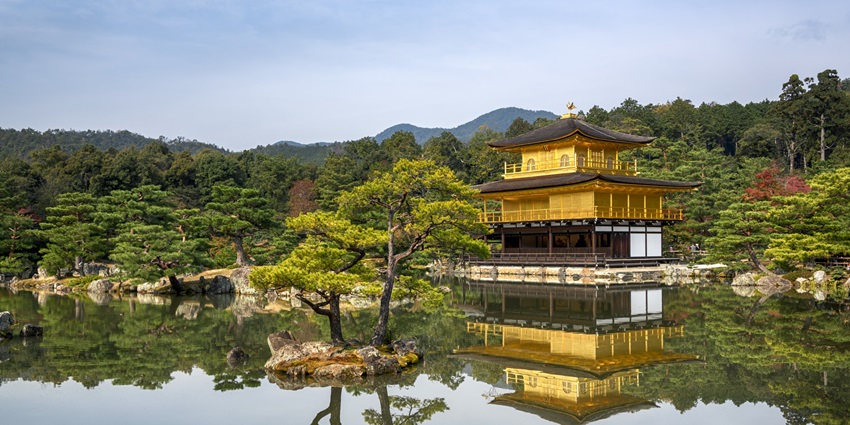
Photo: Ilya Grigorik / Wikimedia Commons
Kinkaku-ji, also known as the Golden Pavilion, is one of Kyoto’s most iconic landmarks. This Zen Buddhist temple is covered in shimmering gold leaf, creating a breathtaking sight, especially when it reflects off the surrounding pond. Located in a tranquil garden, it offers a serene escape from the hustle and bustle.
Location: Kinkaku-ji, Kyoto, Japan
Main Attractions: Golden Pavilion, beautiful Japanese gardens, and reflective pond
Cost: ¥500 or ₹280 for adults; ¥300 or ₹169 for children
Timing: 9 AM – 5 PM
2. Senso-ji Temple
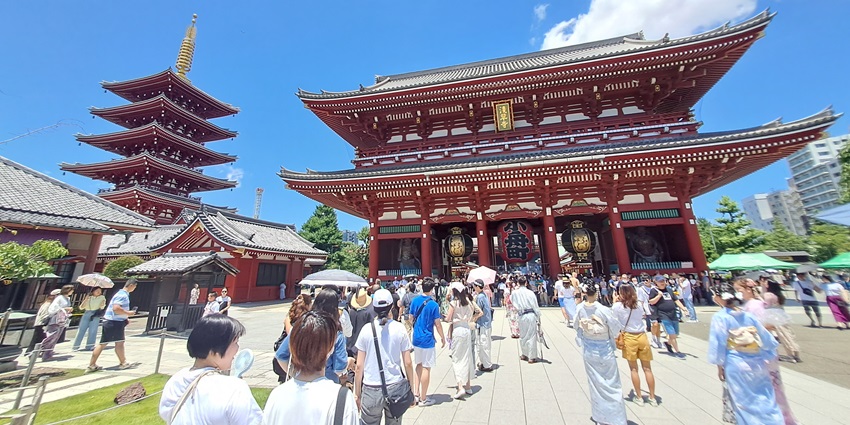
Photo: LMP 2001 / Wikimedia Commons
Senso-ji Temple is Japan’s oldest and most iconic Buddhist temple, built in 645 AD. This historic gem draws visitors with its majestic architecture and vibrant atmosphere. As you approach, the impressive Kaminarimon Gate greets you, leading to Nakamise Street, lined with traditional shops. Don’t forget to explore the temple’s serene inner grounds, where you can experience a sense of peace and connect with Japan’s rich cultural heritage.
Location: Asakusa, Tokyo, Japan
Main Attractions: Kaminarimon Gate, Nakamise shopping street, and Hozomon gate
Timing: 6 AM – 5 PM
3. Todai-ji Temple
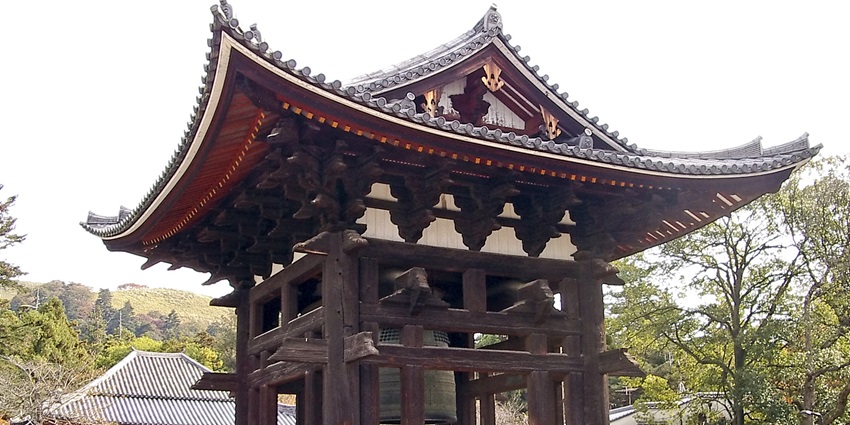
Photo: Urashimataro / Wikimedia Commons
Todai-ji Temple is a stunning example of Buddhist architecture. This is one of the most famous temples in Japan for housing the Great Buddha (Daibutsu); this UNESCO World Heritage site attracts visitors from around the world. Its massive wooden structure is the largest of its kind in the world, and the tranquil atmosphere inside is perfect for those seeking peace and reflection.
Location: Todai-ji, Nara, Japan
Main Attractions: Great Buddha statue, Nara Park, and the Daibutsuden (Great Buddha Hall)
Cost: ¥600 or ₹330 for adults; ₹300 or ₹169 for children
Timing: 7:30 AM – 5:30 PM
4. Kiyomizu-Dera
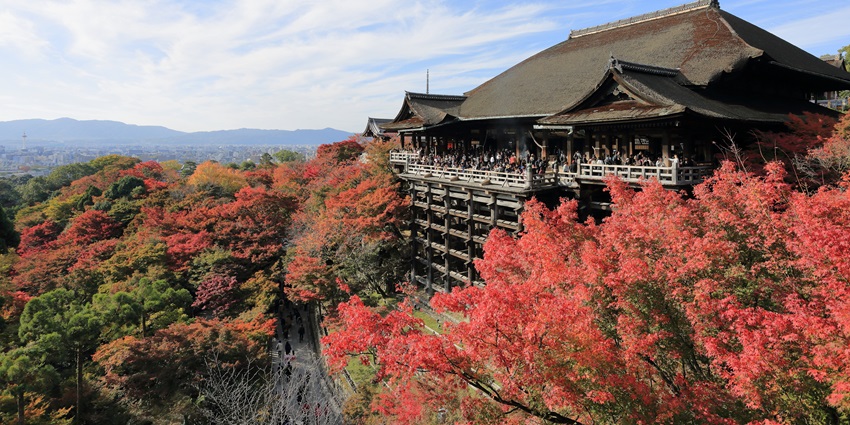
Photo: Martin Falbisoner / Wikimedia Commons
Kiyomizu-dera, a UNESCO World Heritage site, is one of the most iconic temples in Japan. Situated on a hillside, it offers stunning views of the city, especially during cherry blossom season. The main hall, supported by hundreds of wooden pillars, is an architectural marvel. Don’t forget to visit the Ottawa Waterfall, where visitors drink from three streams, each believed to grant a different blessing.
Location: Kiyomizu-dera, Kyoto, Japan
Main Attractions: Wooden stage, Jishu Shrine, and cherry blossoms
Cost: ¥400
Timing: 6 AM – 6 PM
5. Fushimi Inari Taisha
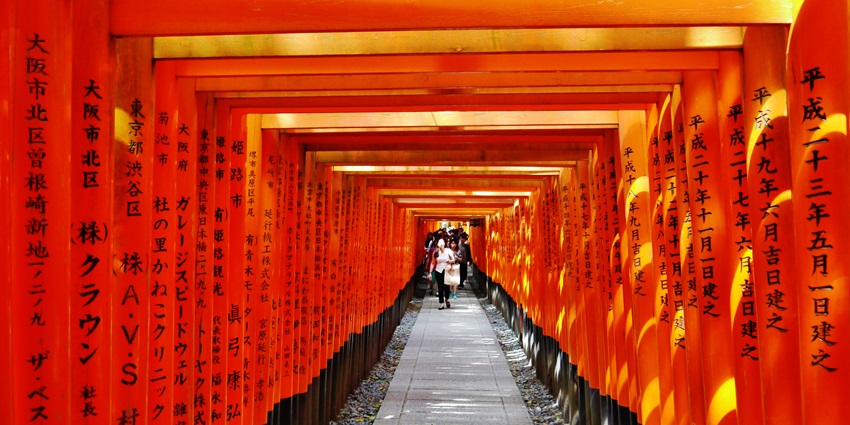
Photo: Zairon / Wikimedia Commons
Fushimi Inari Taisha is one of the most iconic Japanese temples, famous for its thousands of vibrant red torii gates. As you walk through the winding paths up Mount Inari, you’ll experience a peaceful, almost magical atmosphere. The shrine is dedicated to Inari, the Shinto god of rice and agriculture, and is a must-visit for anyone interested in culture, history, and stunning views.
Location: Fushimi Inari, Kyoto, Japan
Main Attractions: Torii gates, Mount Inari, and Inari Shrine
Cost: Free
Timing: 24*7
6. Meiji Shrine
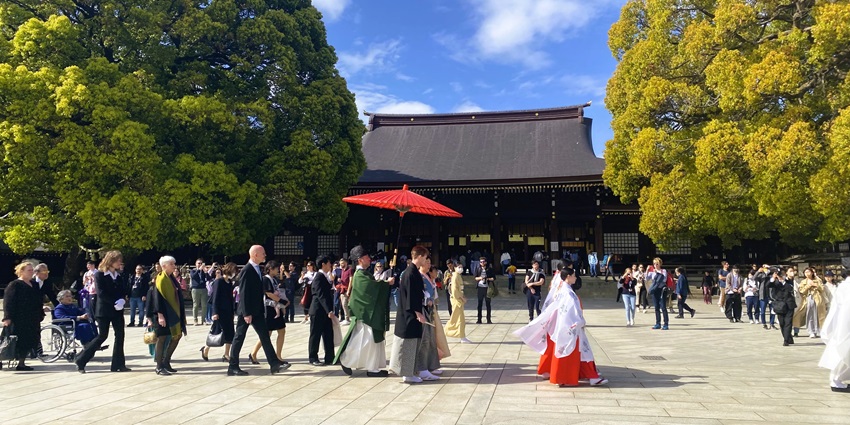
Photo: Akonnchiroll / Wikimedia Commons
Meiji Shrine is a serene escape from the city’s hustle and bustle. Dedicated to Emperor Meiji and Empress Shoken, this grand Shinto shrine is surrounded by dense forested grounds, offering a peaceful retreat. Visitors can enjoy walking along its scenic paths, witnessing traditional rituals, and exploring the vibrant culture. It’s a perfect spot to experience Japan’s spiritual heritage while connecting with nature.
Location: Meiji Shrine, Shibuya, Tokyo, Japan
Main Attractions: Sacred forest, Japanese calligraphy wall, and prayer offerings
Cost: Free
Timing: 5 AM – 6 PM
7. Horyu-ji Temple
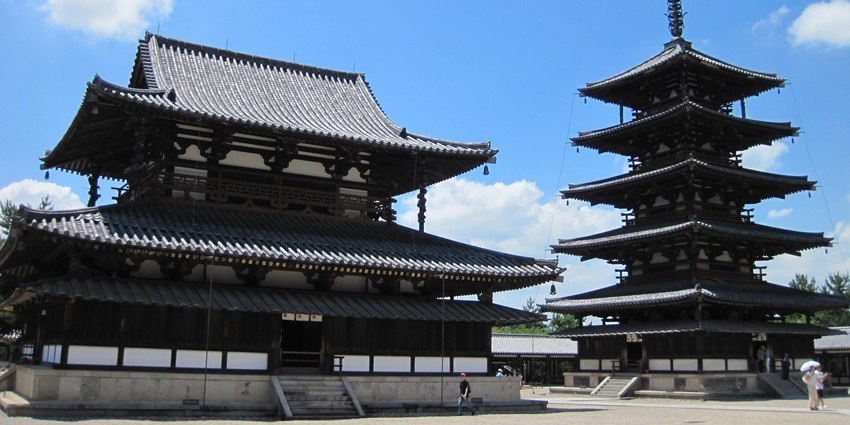
Photo: Nekosuki / Wikimedia Commons
Horyu-ji Temple is one of the oldest wooden structures in the world, dating back to the 7th century. A UNESCO World Heritage site, it’s renowned for its stunning architecture, including the five-story pagoda and golden hall. Visitors can explore the temple’s tranquil atmosphere and ancient artefacts, offering a glimpse into Japan’s rich cultural history.
Location: Horyu-ji, Nara, Japan
Main Attractions: Five-story pagoda, Great Hall, and historical Buddhist relics
Cost: ¥1500
Timing: 8 AM – 5 PM
8. Ryoan-ji Temple
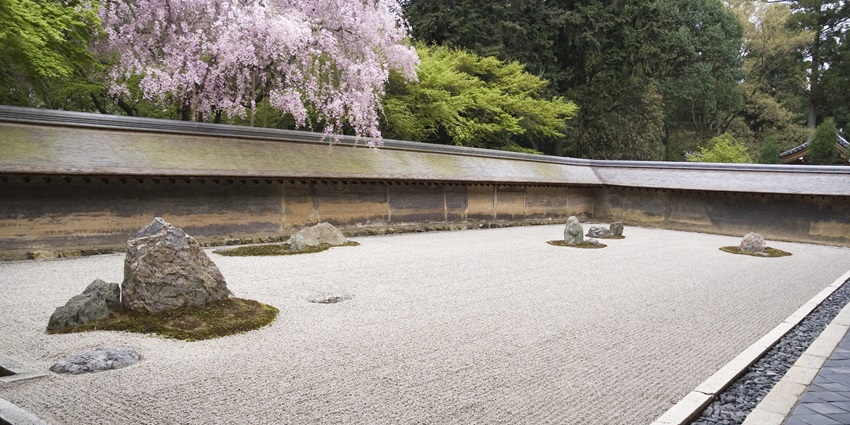
Photo: Cquest / Wikimedia Commons
Ryoan-ji Temple is renowned for its Zen rock garden, a masterpiece of simplicity and tranquillity. The garden features 15 stones arranged in a way that visitors can never view all of them at once, symbolising the impermanence of life. It’s a perfect spot for reflection, offering peace and calm amidst nature. If you are in Kyoto, don’t miss the chance to experience this iconic site.
Location: Ryoan-ji, Kyoto, Japan
Main Attractions: Zen rock garden, Karesansui gardens, and tea ceremony hall
Cost: ¥500 for adults; ¥300 for children
Timing: 8 AM – 5 PM
9. Zenko-ji Temple
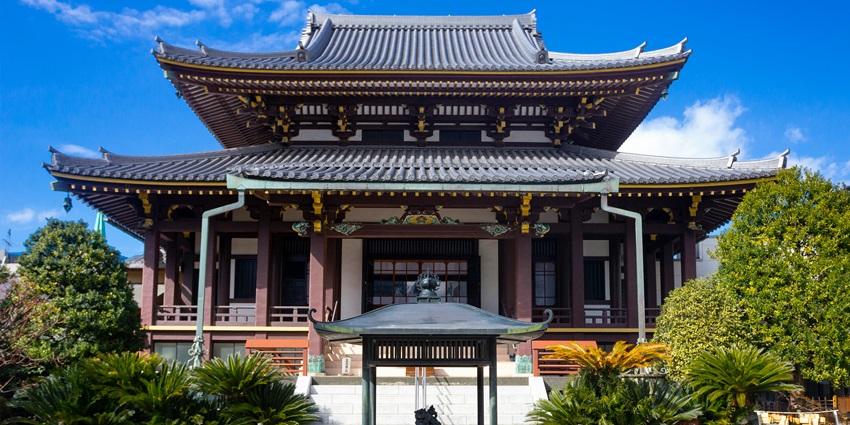
Photo: Andrey Grushnikov / Pexels
Zenko-ji Temple, located in Nagano, Japan, is one of the country’s most important and historic Buddhist temples. Established over 1,400 years ago, it attracts visitors with its stunning architecture and peaceful atmosphere. The temple is famous for housing a revered statue of the Buddha, which is only shown to the public once every seven years. Whether you’re a history lover or just seeking serenity, Zenko-ji offers a truly unforgettable experience.
Location: Zenko-ji, Nagano, Japan
Main Attractions: Hidden Buddha statue, pilgrimage route, and historical architecture
Cost: ¥50 onwards
Timing: 6 AM – 5 PM
10. Toshogu Shrine
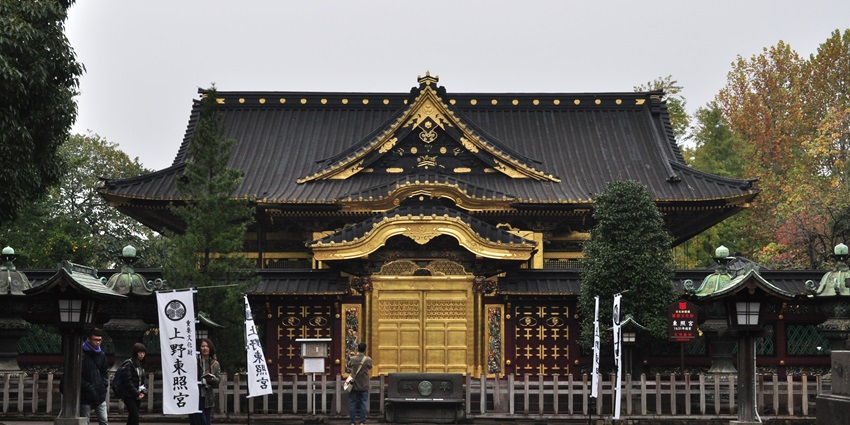
Photo: Joe Mabel / Wikimedia Commons
Toshogu Shrine is a stunning masterpiece of architecture and a UNESCO World Heritage site. Dedicated to Tokugawa Ieyasu, the founder of the Tokugawa shogunate, this shrine is known for its intricate carvings, vibrant colours, and beautiful natural surroundings. The famous “see no evil, speak no evil, hear no evil” monkeys can be spotted here, making it a must-visit for history and culture lovers.
Location: Toshogu Shrine, Nikko, Japan
Main Attractions: Sacred trees, Yomeimon Gate, and the Five-Story Pagoda
Cost: ¥1,300 for adults; ¥450 for children
Timing: 8 AM – 5 PM
The sacred temples in Japan are not just places of worship but also cultural landmarks that showcase the country’s rich history and traditions. From the serene gardens of Kyoto to the grand shrines of Tokyo, these temples in Japan provide insight into Japan’s fascinating past and present. Discover the history, beauty, and tranquillity of Japan’s most revered temples with TripXL today.


 WhatsApp
WhatsApp
 Twitter
Twitter









